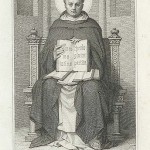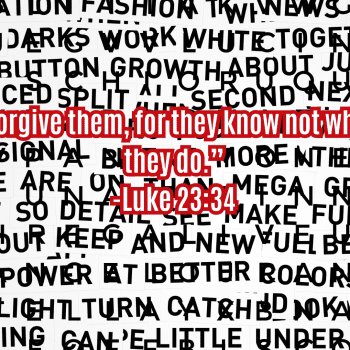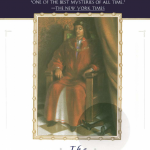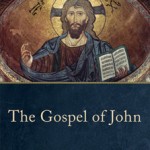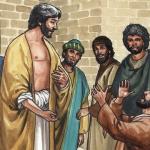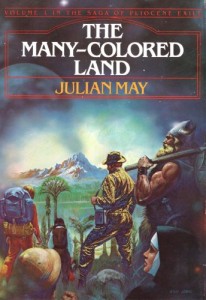 Julian May’s Saga of the Pliocene Exile is a collection of four books: The Many Colored Land, The Golden Torc, The Non-Born King, and The Adversary. It was first published back in the 1980’s; I remember reading positive reviews of it in Analog Science Fiction and thinking it sounded rather uninteresting. The reviews, as I remember them, conveyed something like this to me: A hundred years or so in our future, a French physicist named Guderian has invented a time machine that only works one way: it will transport a small volume to the precise same spot in the valley of the Rhone some time during the Pliocene era. Certain individuals who find themselves unsuited to life in the modern era for one reason or another choose to seek exile in the distant past by means of this time gate. Once there they have to deal with the primitive surroundings.
Julian May’s Saga of the Pliocene Exile is a collection of four books: The Many Colored Land, The Golden Torc, The Non-Born King, and The Adversary. It was first published back in the 1980’s; I remember reading positive reviews of it in Analog Science Fiction and thinking it sounded rather uninteresting. The reviews, as I remember them, conveyed something like this to me: A hundred years or so in our future, a French physicist named Guderian has invented a time machine that only works one way: it will transport a small volume to the precise same spot in the valley of the Rhone some time during the Pliocene era. Certain individuals who find themselves unsuited to life in the modern era for one reason or another choose to seek exile in the distant past by means of this time gate. Once there they have to deal with the primitive surroundings.
Oh, I thought, another dinosaur book. How thrilling.
But eventually, being short of reading material (I was in college; I was dependent on stock turn-over in the local bookstores for new fantasy and science-fiction books to read) I picked up The Many Colored Land and discovered that it was something quite different than I had thought.
Yes, there’s a time gate; yes, there are exiles. But both the future and the past worlds were more interesting than I had guessed. The future world is a time when Earth has been drawn into a galactic civilization based on “metapsychic” powers, telepathy and so forth, which have just begun to blossom in the human race; and the past world is found to have already have been settled by the Tanu and the Firvulag, a pair of exotic races from a far distant galaxy. The Firvulag have genuine but limited metapsychic powers, mostly in the area of creating illusions, and the Tanu, though having only latent metapsychic abilities have learned to awaken those powers by the use of special electronics which are worn around the neck in the form of golden torcs (natch).
If you’re at all acquainted with the folklore of the British Isles those names will seem reminiscent of the Tuatha de Danaan and the Fir-Bolg, and for good reason.
As the book begins, every party of exiles that has come through the gate for the past several decades has been scooped up the Tanu, who have been eager to have them for the tech gear and knowledge they possess, knowledge that has given the Tanu near dominance over the Firvulag, but also for their reproductive abilities. Tanu reproduce slowly if at all, and it develops that humans and Tanu are interfertile….
In short, our exiles are due for a wild ride, and the presence of several wild cards among them kick off a storm of intrigue, warfare, and disaster that easily fills the four books. There are numerous interesting and memorable characters, and it’s all wrapped up quite satisfyingly in the end.
I re-read the four books recently after having not looked at them for about fifteen years, and was pleased to see that they held up pretty well. I was also fascinated by the Catholic themes, and how they played with the details of May’s world.
The theosphere of May’s world is one of evolving consciousness à la Teilhard de Chardin (who is referred to as St. Teilhard in the books). The metapsychic union (or “coadunation”) of the races of the Galactic Milieu is the next step in this evolving consciousness. It’s never made clear (that I could see) whether the Catholics in the novel worshipped the transcendent God of orthodox theism or whether the evolving consciousness of the universe was in fact supposed to be God coming to know Himself over time; though as one of the priests in the series is named Sister Amerie one can assume that strict orthodoxy wasn’t intended. In any event it was interesting to watch.

